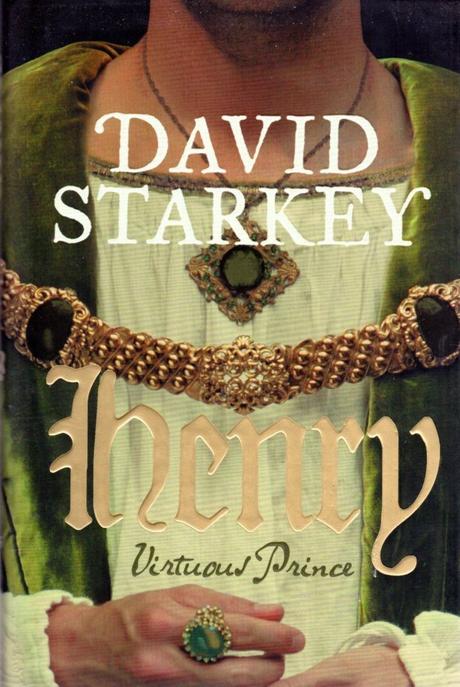If you were asked to read some important books on history which ones would you read? With so many books to choose from it is almost impossible to know where to start, but these ten I have picked are most probably a good choice. Not only will I give the reasons why I picked them, but I will also go into them a little and what sort of historical context each book offers…
10. Henry- Virtuous Prince by David Starkey
Anyone who reads Henry-Virtuous Prince by David Starkey will examine this title and inquire “Which Henry”? It has to be Henry VIII, the English king whose sovereignty has twisted the basis both for Dr Starkey’s academic career and for his ensuing one as a media star. In most respects it could be called Henry: Apprenticeship, to imitate his best-selling earlier book on the youth of the other most famous Tudor, Queen Elizabeth I. It is similarly concerned entirely with how an eminent monarch was prepared for, and first established, his or her rule, though in this case intended as the first volume of a full-length biography of Henry, to crown Starkey’s work as a historian.
Unsurprisingly, it displays all the features that have made that work so popular hitherto. It has the same racy style, with the trademark detached punch lines that infuse passages with drama or irony. It is filled with Dr Starkey’s enduring fascination with royal courts, which has always manifested in two ways. One is his taste for unravelling the backbiting and fixing that was an endemic part of a courtier’s life: he is expert in suggesting why some individuals got royal favour at particular moments and others lost it. The other is his innate love of theatre, and especially that of royalty, so that this book, even more than its predecessors, is packed with pageantry and ceremony. It swishes with satin, velvet and cloth of gold, and shimmers with gems, precious metals, weaponry and armour. This is the sort of stuff for which many ordinary readers open history books, and, as usual, Starkey shows why it mattered to a world in which display, symbolism and ritual were central to political life.
It has, therefore, an immense amount to offer the general reader: what does it have to give the historian? Here the book suffers slightly from the length and intensity of the author’s existing work on the subject, on page and screen, in that some of the discoveries that he contributes to it have been aired before. Long ago he established the political importance of hitherto neglected court offices such as the staff of the privy chamber, and more recently he has drawn attention to the most unusual quality of young Henry’s childhood, in that he was brought up mostly among women, his mother and sisters. This, he plausibly suggests, made the king more cultured, pampered and poised than most elite males of the time. None the less, there are several little gems of brand new information in the book, such as the importance of Lord Mountjoy in introducing young Henry to cutting-edge humanist thought, and of Sir Henry Marney, as his first favourite and political go-between on becoming king. It is proved that Henry was not, as had been thought, allowed to risk his life jousting before he had established himself on the throne, and that he played a personal part in destroying some of his father’s henchmen when he succeeded. The book adds much helpful detail to a story which is in outline that which experts already know.
In brief, David Starkey has produced the most careful as well as the most colourful study of the young Henry for a long time, and perhaps of all time. His research has been thorough, and a number of new or undervalued pieces of source material unearthed. It is easy to wish for more. The book is caught awkwardly at times between its dual aspects as a popular and a scholarly work, being unwilling to devote space to some issues of academic interest. For example, it draws attention to an exquisite terracotta bust of a young boy by Guido Mazzoni, thought to be of Henry, but cannot make the time to explain exactly why this identification has been made. It suggests that Edmund, Earl of Suffolk, was the most dangerous of the pretenders to challenge Henry’s father, King Henry VII. As Suffolk handed himself in without having managed to raise a single soldier, whereas his predecessors invaded with armies, this seems odd; it would be interesting to hear the argument, but none is offered.
Another basic difficulty – and a more important one – is a lack of sound information, for all Starkey’s patient trowelling. Too much about the young Henry’s life must be based on supposition, conjecture or a privileging of one unreliable witness after another. In the last analysis, the evidence to answer the fundamental question about it – of how and why he turned out to be such an extraordinary king – just isn’t there. The fact that David Starkey does so much with what survives is a further credit to his powers, and can only make readers long for his next book, on the mature Henry.
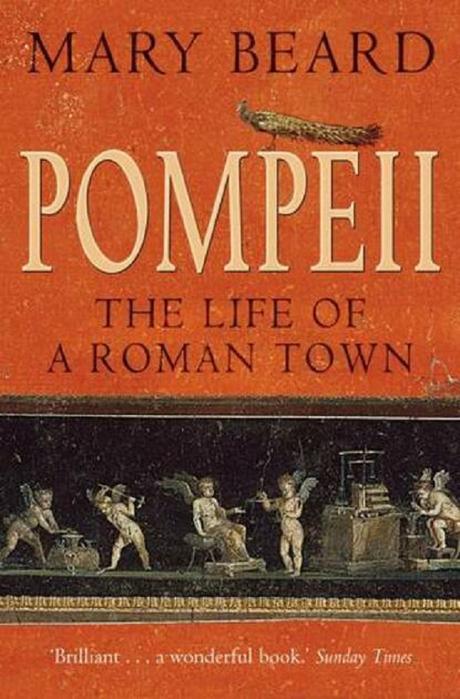
9. Pompeii: The Life of a Roman Town By Mary Beard
Mary Beard’s chronological survey persuasively put flesh on the bones of the town’s residents. This marvellous book won the Wolfson history reward and is a replica of slight but nearby writing about the history. Pompeii is an immense subject matter.
Beard is cautious to keep away from twist through over-generalization. She takes pains to stress, for example, that the reality of Pompeii’s story is not the clichéd one of a town ‘frozen in time’ but a more complex and fascinating one altogether. First, she explains that many inhabitants upped sticks well before the fateful day in August 79, taking their treasures with them. Secondly, townpeople and looters alike had plenty of opportunities to salvage/steal valuables after the eruption. And thirdly, much of what we see today is, in fact, reconstruction – almost all of the upper levels of Pompeian buildings for a start. All of these things, together with ‘aggressive restoration’, Allied bombing and erosion mean that what we see today is far from the sealed capsule that time-travellers hope for.
Beard’s Pompeii is an up to the minute account drawing upon much fascinating research – on studies of wheel ruts gouged into the town’s shiny black-bouldered streets, for example, which indicate complex one-way traffic systems. Or of plaster casts of plant roots which help to identify crops. She weighs up the evidence to make the story less sensational but more compelling. And she shows what ancient history is all about: piecing together fragments, interpreting gaps, noting context. Were the gladiators heart-throbs, as graffiti suggests? Well, the graffiti was in their barracks, so they may have written it.
Perhaps Beard’s greatest gift is a no-nonsense directness that often cuts through academic over-speculation. For instance, following a discussion of what anthropologists call ‘zoning’ (in which sectors of a town are associated with particular functions or degrees of affluence), she concludes: ‘the simple truth is that Pompeii was without the zoning we have come to expect.’
As ever, Beard’s style is highly readable and her book is therefore as valuable to the general reader as to the student. Pompeii is exhilarating and unique. It has found the book it deserves.

8. Clean: An Unsanitised History of Washing By Katherine Ashenburg
“The odor of one another’s bodies was the deep-sea our intimates swam in,” Katherine Ashenburg writes pensively in this amusing story of altering attitudes to cleanliness; whereas now, “smelling like a person is an offense, and the objective is to smell like an foreign fruit”. Cocooned in our defense cells, freshened and anaesthetized, we are preset on privacy, and our bodies fret us. We don’t actually like confessing they live. So Napoleon’s commands to Josephine – “I will return to Paris tomorrow evening. Don’t wash” – seem alien, even absurd. In our age, the big money’s on any product that can obliterate the whiff of female genitalia.
Yet we’re still inquisitive about what goes on in bathrooms – so curious that, according to Ashenburg, a new hotel has opened in Montreal featuring peep-holes between the bedroom and bathroom areas, giving guests a “voyeuristic opportunity” to get a good look at each other on the can or in the tub. Soon there will be no refuge for those, like Porto, struggling heroically to monopolies the only lockable room in the house.
Our current squeamishness is far removed from the Romans’ take on the body. For them bathing was a highly social activity, with hours spent every day wallowing naked in pools of differing temperatures. There they would eat, talk and cavort with friends, business associates and prostitutes, before being scraped and oiled by an obliging slave. Gibbon attributed the Romans’ downfall to all this bathing, but the British have always been wary of a good soak. I got here 30 years ago and am still searching for a satisfactory shower.
What with water shortages and the lawless profiteering among water companies, we may all have to resort to the sponge-bath soon. So here’s some 1860s ablution advice: after your cold and meager 2in-deep sponge-bath, “choose some object in your bedroom on which to vent your hatred, and box at it violently for some 10 minutes, till the perspiration covers you. The sponge must then be again applied to the whole body.” (What the 19th-century Englishman really hated was hot water.)
I know someone who makes Charlotte Corday dolls – but Marat’s demise was clearly not the ad for bathing that Archimedes’s “Eureka!” moment was. The French have failed to impress anyone on the bathroom front ever since, preferring the shabbily romantic boudoir approach to the puritan, paranoid and patriotic American bathroom, a “laboratory” or “factory for washing”. American anxiety about the body has always outstripped mere European disquiet. The average size of the American bathroom has tripled since 1994, Ashenburg tells us, with rich Americans now coveting more than one bathroom per person – literally giving themselves permission to shit in two places at once. What does that say about a society?
To differentiate themselves from Jews and Muslims, early Christians decided to be dirty: one sign of sanctity was to spend a good bit of your time writhing in excrement. Devout Jewesses have probably on average been cleaner than anybody, being guaranteed at least “12 serious baths a year”, by way of the mike (without which menstruating women aren’t allowed back in the synagogue).
But everybody in Europe was actually bathing quite a bit, publicly too, until the plague put people off it for 400 years. By the end of the 16th century, “To immerse yourself in hot water, you had to be foolhardy, German – or ill.” German bathhouses remained open during episodes of the plague in the belief that the waters were therapeutic. (Later, Stuttgart’s bathhouse even had a bath for dogs. How willingly they frequented it is not revealed.)
For some time everybody just changed their shirts a lot. Linen was held to have sufficient cleansing properties – cloaked in a clean chemise, you only needed to dip your fingertips in a bowl of water once in a while. Despite having vowed to live simply, Rousseau found it impossible to relinquish his 45 Venetian shirts. A thief finally freed him from his “servitude” to fine line.
Thanks to the discoveries of Florence Nightingale, big advances in cleanliness were made during the American civil war – only three soldiers died of disease for every two that died from war wounds (half the number in the Mexican-American war). And the first world war led, among other things, to the invention of Kotex, an unadventurous name based on the words “cotton-like texture”. Originally designed as throwaway bandages for American soldiers in France, it turned out all the nurses were using them too.
The book is full of such tidbits, often revealed in the form of sidebars and a great array of images, such as giant engravings of plumbing pipes. But Ashenburg really warms to her subject when she considers the disastrous effects of soap and deodorant advertising: the resultant body phobias may have caused the recent surge in asthma, allergies, arthritis, Crohn’s disease and multiple sclerosis. We got too clean! She quotes Allen Slaking in the New York Times: “The same places where Americans most fear terrorism – airplanes, schools, mass transit, water supplies and computers – they also fear germs.”
Our perplexity about cleanliness seems irresolvable. The Greeks considered bathing in hot water effeminate, and it has often been associated with vanity and lasciviousness. Only women get a bath in European painting: Rembrandt’s Saki, the harems of Ingres, Degas’s sweaty whores and ballerinas, Bonnard’s recumbent, waterlogged forms. All-male nude swimming in cold watering holes is considered much more excusable, and is sometimes acclaimed as a sign (or a test?) of virility. George Costanzia (of Seinfeld) would disagree, being fearful of “shrinkage”. How vain is that?
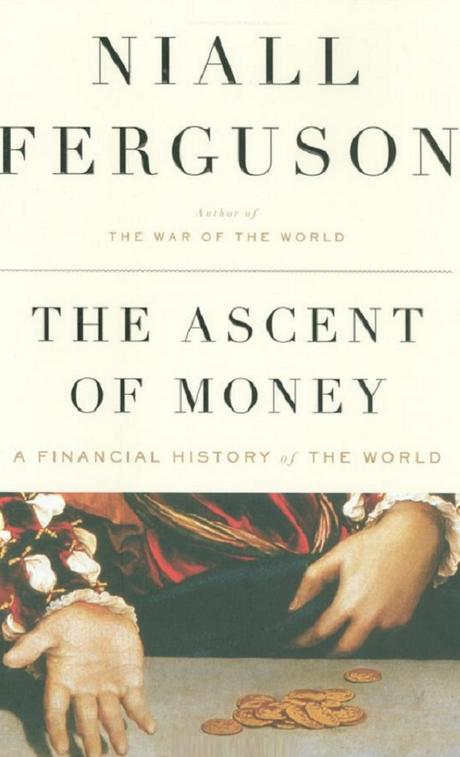
7. The Ascent of Money: a Financial History of the World By Niall Ferguson
Niall Ferguson here takes us a history that is enlightening, enjoyable and sobering. Being in print in the middle of a global financial render down, for a book such as this, is a diverse sanction, as a pace too far on the bearish side may make the writer look like a fate monger, even as being a little optimistic might look narrow-minded. Ferguson, though, seems to direct to drag it off, even if that equally is a blemish assessment. However, though it’s obvious where his loyalties lie in the pro/anti capitalism discuss, the equilibrium of the tale tends yet towards a variety of stuns delivered to the society rather than towards the prosperity delivered, albeit still severely speaking to a relative minority of humankind, by marketplaces and their fat, money.
As it turned out, some of the ground covered was familiar territory to me, bringing together strands of other books I’ve read recently, including Findlay and O’Rourke’s Power And Plenty, Bentley’s A Book Of Numbers, Schema’s The American Future and even Lonely Planet Andalucía.
But some of it was new. He gives the origins of ghetto (a geto was a casting, and the original ghetto was in Venice’s foundry district); explains that a consol gets its name from “consolidated fund”; and confirms that “dollar” comes from the German “taller”, on which the Spanish based the piece of eight, the world’s first truly global currency.
Ferguson is also adept at telling stories: his account of the First Opium War, for example, is probably the clearest I’ve come across, and in the chapter on housing there is an excellent explanation of how the development of securitization by Salmons ultimately led to the sub-prime meltdown.
He’s not always right. In a description of segregation in Detroit and the 1967 riots he describes Aretha Franklin as a Motown star, which she almost, but never quite, was. And the final chapter begins with speculation that the rest of the world has decoupled from the United States economically. Unfortunately time has not been kind to this notion, with only Brazil, it appears, unaffected so far (December 2008), oil down by over $100 a barrel from its mid-08 peak, and even China’s growth looking very shaky. But if there are any signs that “His pages are hot with proof-stage tidemarks”, as one newspaper review alleged, then Ferguson is not alone in his revisionism: after all, even the German finance minister got it wrong. And in mitigation, this is the man who ended a previous television series (Colossus) warning that the United States was “heading for a credit crunch”.
This is not, to be sure, a technical book. Readers seeking more detail of some of the principles described should go to the likes of Brealey and Myers’s Principles of Corporate Finance. However, Ferguson more than succeeds in achieving his objective of providing a foundation of financial awareness for the general reader, providing plenty of food for thought. Amongst the morsels on offer: in better days for Argentina, the other Harrods was in Buenos Aires; the birth of stock markets was in 17th Century Netherlands, a country now often reduced to two letters in “Benelux”; and he ultimately really hits the button marked Panic by reminding us of the consequences of al-Qaeda’s effecting a nuclear strike, of a further Katrina-like event, or of inundation courtesy of global warming.
So, great book, and so much for the past, but what of the future? Ferguson describes himself as a “open-minded fundamentalist”, and certainly descriptions of him as “rightwing” look overdone. Nevertheless, there seems to be a faith implicit that capitalism can cure itself, counter to the standard Marxist analysis of a bankrupt and inevitably doomed system. So where, as Larry Elliott has asked, is the intellectually endorsed social democratic alternative? It is implicit, ironically, in the response of the US government, but the measures being taken by that and several other governments has the appearance of a huge geo-economics experiment unsupported by any clear theory other than it is the opposite of what was done in the 1930s. What is needed is a Keynes for the naughtiest. I’m looking forward to reading Kurgan’s new work to see if that is where the gap is filled.
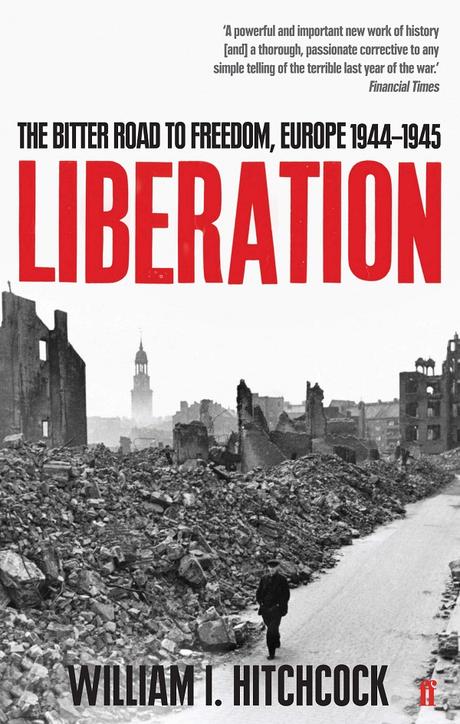
6. Liberation: The Bitter Road to Freedom, Europe 1944-1945 By William I Hitchcock
The Russian troops who unconventional Auschwitz in January 1945 were humiliated, even shocked, by what they saw. The Jews before them were wounded, starved and had the secretiveness of sought animals. Primo Levi was one of hundreds of Jews rescued that daylight hours. Associates rushed to hold him in their arms when, nine months later, he arrived at his residence in northern Italy. Yet, within days, the excitement of his return had vanished.
Levi frightened death in a way he had not done in the camp. Was this the fall down that follows on from “a great relief”? Levi’s insight into his psychological state was rare among survivors. Not many were aware of the disturbance – the neurotic aftermath – that lay ahead so soon after liberation. In 1945, the effect on the psyche of those who had survived the Hitlerian terror was simply not known. All Levi knew for certain was that his present suffering must be followed by more suffering.
Few have articulated the paradoxical joys and miseries of political freedom better than Levi, who is amply quoted in Liberation. According to William Hitchcock, the liberation of Europe in 1944-45 was not always a heroic prelude to healing and renewal. Liberated civilians often viewed their wartime liberators with anxiety, even hatred.When British troops entered the camp of Belsen in April 1945, it seemed the Third Reich’s worst secret was out: the piles of naked, decomposed corpses showed that Germany had departed from the community of civilized human beings. Belsen lent a moral clarity to the war – this is what we have been fighting against. The Jewish survivors, bereft of food and family, initially welcomed the Tummies, yet resentments soon set in. The survivors were not allowed to leave the camp and emigrate to Palestine to help establish a Zionist state. Instead they were seen by the allied military and civil administration as merely another group of “political prisoners”. Hitchcock, an American historian, seems to attribute this policy to anti-Semitism. Yet the truth was that it would be many years before the knowledge of Hitler’s genocide emerged in all its horror; in the meantime, the Jews of Belsen were regarded by their “liberators” as another mishap of everyday Nazi violence.
Unlike German revisionist historians (pre-eminently Ernst Nolte), Hitchcock does not argue for a supposed moral equivalence between Hitler’s extermination of the Jews and the earlier Stalinist extermination of the kulaks. The industrial exploitation of corpses and their ashes was a uniquely Hitlerian atrocity. Given the millions of Germans who had applauded the Hitler regime, Hitchcock is understandably impatient of those same Germans who showed such defensiveness and self-pity at their hour of liberation.
By the same token, the allied troops who defeated Hitler were not always as virtuous in their behavior as the cause for which they fought. During the struggle to liberate Normandy in the summer of 1944, British and US soldiers at times behaved appallingly towards the local population. Racial tensions in France resulting from the presence of African-American soldiers were aggravated by widespread looting, drunkenness and rape. Numbering 10% of the American total, black troops were blamed for a shockingly disproportionate incidence of sexual violence. Military tribunals passed 151 death sentences for rape, yet most whites were reprieved (all but four of the 29 men executed were black). By making a scapegoat of black troops, Hitchcock suggests, scrutiny was deflected from the misbehavior of the white “liberators”, and the honour of the American occupiers restored.
In eastern Europe, the keynote of liberation was unimaginable violence. The abiding symbol of “freedom” in future Soviet territories was the open cattle car shunting cargoes of civilians away from their homes. My mother, a refugee from Stalinist oppression in the Baltic states, fled her home in Tallinn in 1944 to make her way south-west through the catastrophically razed Third Reich to a displaced persons camp in Bremen, before reaching England in 1947. In an excellent chapter, Hitchcock praises the UN relief and rehabilitation administration for mobilizing $4bn of food, medicine and humanitarian aid for those millions displaced by the conflict in the east.
One of the most harrowing chapters documents the Warsaw uprising of August 1944, when 40,000 Warsavians rallied forces to drive out the Germans. The first units of the Red Army were already gathered at the Warsaw gates when the Polish underground took up arms. In the course of the 63-day uprising, the Poles succeeded in liberating swaths of the city, but when Hitler ordered Warsaw and its citizens to be annihilated, the Soviets stood by and watched. When the Red Army finally “liberated” the Polish city five months later, in January 1945, there was hardly anything left to liberate.
Liberation expresses the shame of war and its consequences with honesty and proper compassion. Unavoidably the book raises uncomfortable questions about the fate of civilians in the firing line; the current anxieties in Gaza lend it a dreadful significance.
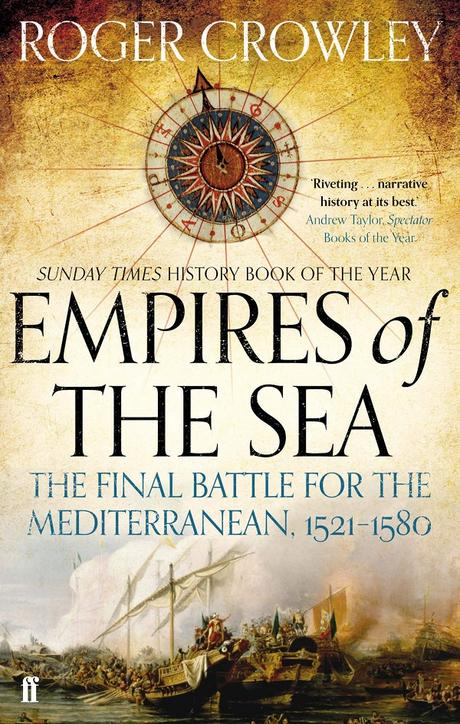
5. Empires of the Sea: The Final Battle for the Mediterranean, 1521-1580 By Roger Crowley
There is a confident British genius for Boys’ possess manuscript armed forces history, and Roger Crowley has it. The centrepiece of his book is the Turkish blockade of Malta in 1565, and to portray a blockade gets fictional aptitude of an elevated order: sans that, dead recurrence becomes the sort of the day. Crowley provides a third of his book to Malta, and he be acquainted with all the peculiarities of the island. The blockade lasted for four months, and the result depended on the courage of a small, depicted settlement, carried weapons at the final moment, which prohibited the Turks from appropriately spending the major defences.
Crowley can grip all the procedure of an early on the modern blockade when thick defences could oppose gunnery that was still in relative childhood (guns sometimes blew up). He has his defenders cutting and slashing, falling into exhausted catalepsy, starving, recovering, and cutting and slashing all over again. It can be read as you might read Bernard Cornwell’s Sharpe novels, and the momentum would easily carry you through a plane journey. But it is also a work with serious research behind it, and a contribution to quite an important and even topical subject.
In the later 16th century, the Mediterranean was the centre of civilisation, and a great battle took place for mastery of it. Some decades before, the Turks had taken over Constantinople and what was left of the eastern Roman empire. Under a set of extraordinarily gifted sultans, they then advanced, by land and sea, against the west, besieging Vienna and even threatening Rome itself. Against them, the Pope tried to organise a defence, for this was Christianity versus Islam.
There was a kernel for him to use, the Knights of St John, whose origins went back to the Crusades. The Crusader states on the mainland fell, and the soldiers were evacuated to the relative safety of Cyprus and Rhodes, from which they harried the Turks; they held on with fortresses, such as at Famagusta in Cyprus and Bodrum in south-western Turkey (it is still extraordinarily imposing, with a decent museum, complete with groans coming from the torture chamber). But these places were too exposed once the Turks had built up a navy. And, in any case, the Orthodox population (as later on with Crete) was not very enthusiastic about the serfdom and feudalism on offer from the Latin west. Rhodes fell in 1523, and the Knights had to move west, to Malta, which had a strategic and even commanding position between Sicily and North Africa. They appealed for Christian solidarity.
This was not easy, because the Christian states had quite different interests. Venice was essentially commercial and had no real problem with the Turks: trade with Egypt or Constantinople mattered to it. Spain, under Charles V, had to fight on three or four fronts: there was Latin America, Germany – the Protestants – and France, as well as the Mediterranean. The Dutch had started their revolt, and a cry at the siege of Leyden was “better the Turk than the Pope”. Charles V went mad from the strain, retiring to a monastery and doing a dress rehearsal for his own requiem mass every morning. His son, Philip I, got stuck into boxes and boxes of documents every day, always deciding in the end for the prudent option (about which Crowley is again very good – imagine the difficulty in describing the doings of a prudent bureaucrat).
The French, meanwhile, cooperated with the Turks and even allowed them to take over Toulon as a base. An Israeli foreign minister once said that nothing divides the Arabs more than talk of unity. So it was with early modern Christianity. But still, in the 16th century, a world-historical battle was fought out, and Christianity dominated the world’s affairs from then on. In 1571, Spain and Venice at last cooperated properly, and France, paralysed by the wars of religion, could not interfere. At Lepanto, off the western coast of Greece, a Turkish fleet was annihilated. True, this was not quite the decisive battle that, with Catholic triumphalism, Chesterton claimed it to be (“Don John of Austria is going to the war”). There was a Turkish recovery soon enough, and the real decline of the empire came in the next century.
Again, in describing Lepanto, Crowley is very good indeed. The Mediterranean is a very difficult sea to fight in. It is quite shallow, and the storms are unpredictable. Sailing ships could, of course, carry many more guns than a galley, but they needed extremely careful seamanship, for they could be paralysed quite suddenly by a fierce wind or the wrong currents. The galley, with banks of oars, had many advantages, being easily manoeuvrable, but the crews could be exhausted and demoralised (being captives), and it had to stop in a port again and again to take on water. Bases were essential, and had to be defended by land and sea. To run campaigns in this area required a huge concentration of resources, and since galleys could easily be sunk, a great deal of timber was needed.
One of the interesting aspects of this Crowley might have dealt with is deforestation. Both Castile and Anatolia are bare of trees, but once upon a time were thick with them (when Tamerlane fought his battle against the Turks at Ankara in 1402, he hid his elephants in the forests on what is now the airport: a hollow joke today, because there is hardly a tree for miles all around). Trees went; goats arrived; economic decay followed – maybe climate change made the whole problem worse.
This affected both Spain and Turkey, and it is an odd fact that when they came to build railways, they suffered from exactly the same problems: nails hammered into eroded land did not hold, iron rails expanded and contracted according to semi-Siberian climate-extremes, and the railways worked very inefficiently. It took 12 hours to go from Madrid to Barcelona, and much the same from Ankara to Istanbul. Once motorways were built, the economy could move forward, and the railways could be subsidised. With strange appositeness, Spanish contractors have been modernising the Turkish railways – they supply the most suitable rolling-stock – and the Istanbul journey will be cut to three hours.
There is maybe another side that Crowley could have considered. This was a battle of Catholic Christianity and Islam. But within two generations, the heart was going out of both. Italy and Spain famously declined, and Venice soon became mainly just a tourist attraction. But the Islamic side also degenerated. In the days of the great sultans, the empire was still very largely (Orthodox) Christian, and toleration was the general rule: the Orthodox patriarch was the greatest land-owner of all. Dimitri Kitsikis wrote about this in L’Empire ottoman. The seamen who served the sultans were usually of Christian origin, and though some no doubt converted, it can hardly have been a very convincing process.
Then something happened. It is symbolised by a moment in 1638, not long after the capture of Baghdad, and a fateful extension of the Ottoman frontiers towards the east. There was an earthquake in Istanbul. The religious authorities decreed that this was God’s punishment for the activities of the astronomers. They had installed telescopes on the great tower at Galata, and they were accused of probing secrets best left to God. The telescopes were thrown off the tower and, of course, proper navigation then became impossible – the Turkish navy was never again the terrible power that it had once been. In 1770, it was smashed to matchsticks at Cesme, near Izmir, by a Russian fleet partly served by Scottish officers.
But a little similar also happened in Spain: at Trafalgar, approximately all of its ships were ruined by the greater British. The king had a medal struck, and awarded it to the captains whose ships had not been sunk. Malta and Lepanto were by then a long way back in a once-glorious past, and neither Spain nor Turkey really recovered until four centuries later.
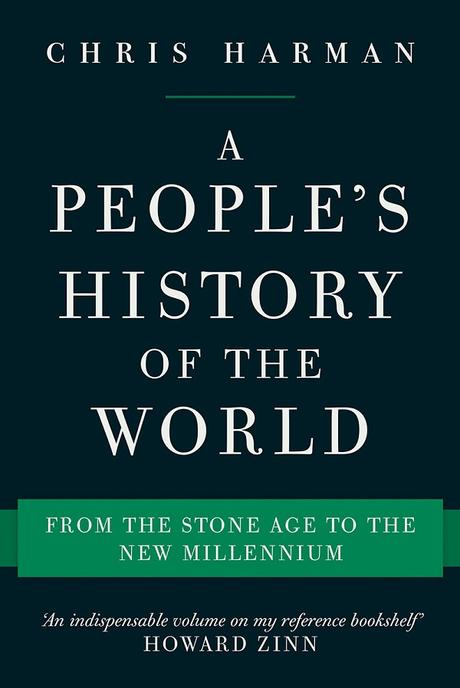
4. A People’s History of the World By Chris Harman
This is a motivated work. Chris Harman efforts to place the totality of human life in conditions of the group and group awareness. Yes, that is extremely indistinct and does no impartiality to the tremendously significant work (which is almost a decade older now, but just discharged in paperback).
Harman is an idealist. My personal favorite thing about “A People’s History of the World” is his persistence that ‘human nature’ is a construct:
“Human beings, we have been told, have always been greedy, competitive and aggressive, and that explains horrors like war, exploitation, slavery and oppression of women. I argue very differently. ‘Human nature’ as we know it today is a product of our history, not its cause.”
For Harman, all humans make a choice. Choices are not the same for everyone. He mentions slave and slave owner, employer and employee or male and female, for examples. These make up history and explain his theory that “understanding the material basis of history is an essential, but not sufficient, precondition to understanding everything else.”
Chris Harman in his book presents a history of the world, a social history documenting the struggles of people the world over from 3000BC right through to the new millennium. It is a beautiful and admirable volume, packed with interesting facts about the inherent fairness of humanity and our desire to work together to create a better society. It is genuinely a world history too, rather than focusing narrowly on Europe or our western philosophies and developments we are given ample insight in to the Chinese empires and African pre-Christian societies. In our present western and so called developed nations we have come to accept selfishness and greed as the norm, this has only been the case for around 2% of our time on Earth. Prior to this, hunter-gatherer societies worked in an egalitarian manner to succeed. Indeed, were they to have followed the example of modernity humans would probably have been wiped out before we were even the minimal blot on history that we now are. Once our societies started to develop a constant theme emerges that of the battle between the rich and the poor that is still being waged today, and it is a theme that has a monotonous, hollow ring to it. People rise up to claim what is rightfully theirs, have a minor success and then the ruling class uses all manner of tools at its disposal to put people right back where they belong; under the boot of elite hegemony.
As the book approaches the industrial revolution, more time and space is devoted to the spread of capitalism and the changes this brought about for peasants and working people across the globe. It is in these chapters that Harman is most at home discussing the economical impact of the new financial structures put in place by the East India Company and their ilk on societies. This is no simple broadside against capitalism though, Communism, or Joseph Stalin’s version of it gets even harsher treatment along with his satraps across Europe who could have stopped fascism in the form of the Nazi’s in its infancy, but chose not to because of the craven misgivings of old uncle Joe.
There is plenty here to prove why Marx is still an absolute essential for anyone wanting to understand the world, and Marx as prophet for the world today. The world wars get extensive coverage as you would expect we well as the French and American revolutions. The chapter on the French revolution in particular does a good job of separating myth from reality and rescuing certain people from their own present day parodies. Slavery is always there hovering in the background across the centuries, rearing its ugly head time and again in different societies from the Greeks to the Americans. There is a wonderful further reading chapter at the end which provides access to a thorough range of extensive materials on the periods most written about. All in all this is a treasure trove of a book, worthy of anyone’s reference shelf and would be a superb introduction to global history in a single volume.
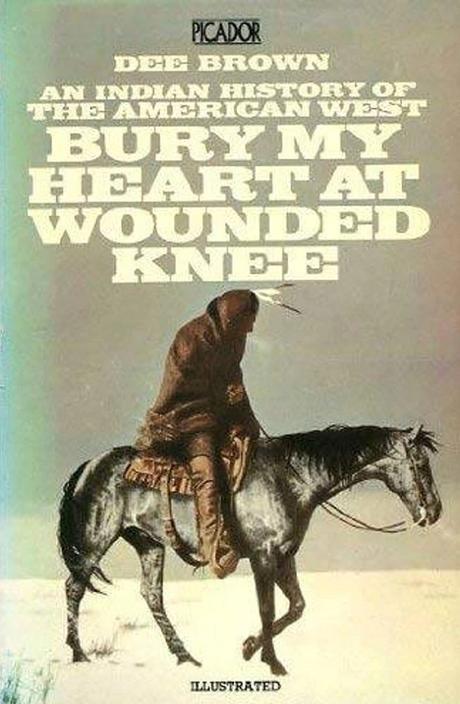
3. Bury My Heart at Wounded Knee: An Indian History of the American West By Dee Brown
Get ready to be affected by this book. I assure that you cannot examine it sans being sensitively touched and shifted by this explanation of the defeat of a gorgeous land, the termination of a careful and pious method of life and lastly the extirpation of a nation of people; or at least their ceasing to live as free, self-governing, self-important and gracious persons.
Let me first say, Dee Brown’s book, BURY MY HEART AT WOUNDED KNEE is a well-written classic that flows nicely. It contains a great structure and is a pleasure to read. Certainly, no right-thinking person would disagree that the American Indians were used and abused by the government at every turn. The treaties the Indians signed were more often than not, not worth the paper they were written on. Murderous cowards like Chivington betrayed those who declared themselves peaceful and friends of the whites, like Black Kettle and the Cheyenne atrocity at Sand Creek. While still under British rule, Indians of the Ohio Valley were victims of one of the first instances of bioterrorism when the British knowingly and deliberately infected them with smallpox.
So while it is safe to say the sentiment of Brown’s book is clearly accurate and justified, for the overall scope of the book, an exception must be taken by anyone seeking the cold hard truth. Since Brown’s book was published, and quickly popularized, most historians have followed Brown’s approach to viewing the Indian Wars of the American West from a strictly ethnocentric viewpoint. To them, the term “Indian wars” has come to mean only “Indian – White wars”, fought primarily to interrupt the flow of the expansion of white settlement. Paul Wellman began this trend in 1934 with his publication of the account of the 1862 Minnesota Massacre, DEATH ON THE PRARIE. However, what Wellman began, Brown perfected, until we have now reached, in this country, where the history of the American Indian is involved, a sort of Zinnia approach (a phrase I coined myself after revisionist historian Howard Zinnia) to the re-writing or revision of American history, in this case specifically, the history of the American West.
I come to this conclusion for a variety of reasons, not the least of which is Brown’s subtitle, “An Indian History of the American West”. If that is, indeed, what he is seeking to fully examine, then Brown ignores the fact that Indians of different tribes held very different views of that history. He sought to interpret the Indian wars of the northern plains only as “Indian-white” wars and described them only from the viewpoint of the Sioux hostiles. Brown brushes off as “mercenaries” those tribes that became allies to the whites against the Sioux.
To view the Crow (who white trappers and traders had predicted in the 1830′s would soon be extinct due to their far more numerous red enemies) and the Arikara (who also lost their land to the Sioux) as white “mercenaries” is far beyond simplistic reasoning and completely overlooks the long history of Indian warfare in the region. The Crow, Arikara and many other tribes had been fighting the Sioux (and losing, for the most part) for generations before they received any effective aid from the whites. Brown is shortsighted in his work to attempt to lend understanding of the plight of the Indian without an awareness of the history of intertribal warfare.
The Sioux migrated south and west to the Missouri around 1750. In the century preceding and following that movement, the Sioux engaged in war with at least twenty-six other Indian tribes, as well as the River Métis and the U.S. Army. Brown also fails to note that the most dramatic battles fought between the army and the Sioux were on lands the Sioux had taken from other tribes since 1851. Also overlooked is that the Arikara and Hidatsa chiefs who had signed the Fort Laramie Treaty of 1851 had both been killed by the Sioux when in 1864, the Arikara Chief White Shield petitioned the army to uphold its treaty and punish the Sioux.
Brown’s book, as I said earlier, is well written, and parts of it are quite accurate. However, portraying history from only one viewpoint is shortsighted and often has dangerous consequences. Such is the case here. Brown’s book has been accepted as gospel and has since led the way to even further revision of the truth.

2. Warsaw 1920: Lenin’s Failed Conquest of Europe By Adam Zamoyski
This is an outstanding, concise history of the Soviet-Polish War of 1920. This is a military history. Its most important apprehension is with the work of armies, military management, planned purposes, battlefield strategies, armaments, etc. T. Kunikov’s analysis notwithstanding, it is not a book about the impressive supporting purposes of the Soviet government or a dissertation on the socialist danger to western civilization (although these are taken for granted by the writer).
Kunikov’s analysis is typical of the sort of knee-jerk response so many socialist defenders skill whenever they distinguish the slightest criticism of Soviet (or Chinese or Cuban) Communism.
As I have said, this is essentially a book of military history which makes only occasional, oblique references to the motives and objectives of the Soviet (and Polish) leaders. The Soviet leaders’ desire to spread their revolution to Germany and Western Europe is alluded to in the book’s subtitle, “Lenin’s Failed Invasion of the West,” which, if I know anything about the publishing business, was probably dreamed up by an editor eager to give the book more pizzazz. Subsequently, it is referred to in one short paragraph on page 2, which consists almost entirely of two quotations form Lenin himself; in one sentence on page 6 about the Bolshevik’s general belief in the necessity of overthrowing the “established world order;” a phrase on page 7 about “ensuring the survival of Communism in Russia” by exporting revolution to Germany; and another indefinite remark on page 9 about the Communists’ expectations of the “immanent triumph of revolution throughout the world.” That’s it.
The rest of the book’s 224 pages consist of a detailed history of military operations during the Soviet-Polish War of 1920, filled with excellent maps, easy to read and understand.
Even the concluding chapter does not discuss Soviet intentions in their invasion of Poland, except for one sentence in which the author refers to Stalin’s success in 1945 in achieving “much of what Lenin had set out to do in 1920,” and noting “the dark night of Communism that engulfed [Poland] for half a century” thereafter. No one but an ideologically blinded Marxist could deny the truth of that statement.
The Polish attack on the Soviet armies massing on their eastern frontier in 1920 was clearly an act of pre-emptive self defense against an imminent, well prepared Soviet plan to invade their country (similar to Israel’s pre-emptive attack on Egypt and Syria in 1968). The Soviet invasion was scheduled to be launched within forty eight hours. The Poles were well aware of Soviet intentions because they had the world’s most highly developed capability for decoding and reading their opponents radio messages, a talent which was to prove invaluable to the British in World War II.
I find it astonishing that certain reviewers can continue to ignore the openly declared intentions of Lenin, Trotsky, Stalin and the rest of the Soviet leadership of the time (“World Revolution” was their slogan), as well as all of the facts that have emerged from the Soviet Archives since the fall of the Soviet Union in 1991. Russian scholars like Viktor Suvorov, Dmitri Volkogonov, and Arcady Vicksburg, as well as their American and British counterparts such as Albert Weeks, Harvey Klehr, John Earl Haynes, Ronald Radosh, Richard Pipes and J. Arch Getty, have been using this material for nearly two decades now. Many of the original documents are also accessible to any interested reader in the Yale University Press “Annals of Communism” series, which consists of some twenty volumes of Soviet archival documents edited by American and Russian scholars. But, of course, one must first read the documents, then make up their mind.

1. Necropolis: London and It’s Dead By Catharine Arnold
NECROPOLIS: LONDON AND ITS DEAD offers a vivid historical narrative of this great city’s attitude to going the way of all flesh. As layer upon layer of London soil reveals burials from pre-historic and medieval times, the city is revealed as one giant grave, filled with the remains of previous eras — pagan, Roman, medieval, Victorian. This fascinating blend of archaeology, architecture and anecdote includes such phenomena as the rise of the undertaking trade and the pageantry of state funerals; public executions and bodysnatching. Ghoulishly entertaining and full of fascinating nuggets of information, Necropolis leaves no headstone unturned in its exploration of our changing attitudes to the deceased among us. Both anecdotal history and cultural commentary, Necropolis will take its place alongside classics of the city such as Peter Accord’s LONDON.
Christopher Wren’s reconstructing of St Paul’s discovered chalk-lined Saxon graves. Below that were the solid timber brooches that once held together British caskets; even profound, 18 feet down, were Roman vases. As layer upon layer of London dirt discloses interments, the city appears as one enormous grave. Catharine Arnold offers a history of the city’s dead from prehistory to the spontaneous shrines of flowers and posters that now appear at the site of road accidents or murders.
She finds some surprising material: despite the huge pressure of the newly dead during the black death of 1348, Londoners were not hurled into mass graves but were usually stacked neatly, five deep, with their heads to the west so they were correctly aligned for Judgment Day. Closer to the Hammer Horror version were the events of the great plague of 1665, such as an entire horse and cart ending up in a plague pit when a driver lost control. Remains were often put on display: for 300 years, right up to the 18th century, Katherine de Valois lay in Westminster Abbey, “to be seen and handled of any who will much desire it”; Samuel Pepys gave her a kiss.
With the concealed, private burials of dissenting sects there could be grim secrets: in 1839 it was found that a Baptist minister had stacked thousands of bodies in a vault under his chapel, having charged 15 shillings for each burial.
Although it is an elegant saunter through the land of the dead, the book’s excellent work in obscure sources is often let down by sloppiness: Cardinal Wolsey died on his way to face trial, not on the scaffold, and the dead Cromwell was desecrated as a regicide not a “war criminal”. More egregiously, tales that look suspiciously like urban myths are recounted unreferenced. Can it really be true that underground lines between Knightsbridge and Kensington Park were diverted to avoid the skeletons packed into plague pits beneath Hyde Park?
More convincing are the stories of resurrection men exhuming fresh cadavers for anatomists; dredger men looting bodies pulled out of the Thames; and the London Monster, a serial killer centuries before the term was coined, who was duly punished after his suicide by being buried at a crossroads with a stake through his heart.
However, in the world of the dead there are also such visionaries as John Claudius Loudon, an early 19th-century horticultural writer and reformer, who argued that cemeteries should be “tasteful, Classical, poetical and elegant”. It was Loudon’s ideas that informed the creation of the great cemeteries of High gate and Kensal Green, the latter being so posh it was called the “Belgravia of Death”.
Very quickly the overcrowded little cemeteries were removed. Many of London’s public gardens were formerly burial grounds. New graves were built out of town, such as the London Necropolis at Woking, “devoted to the continental usage of giving to each corpse a separate grave”, with its own railway of the dead from Waterloo.
Lastly, Arnold demonstrates how the development of cremation completes a circle in the London experience of death; just as their remote ancestors were immolated, with the cremated remains buried in urns, now most Londoners choose a similar method of dealing with death, to end up in a plastic jar provided by the crematorium. Requiescat in pace.
If you think any other history books should have made this list do let us know in the comments below.
